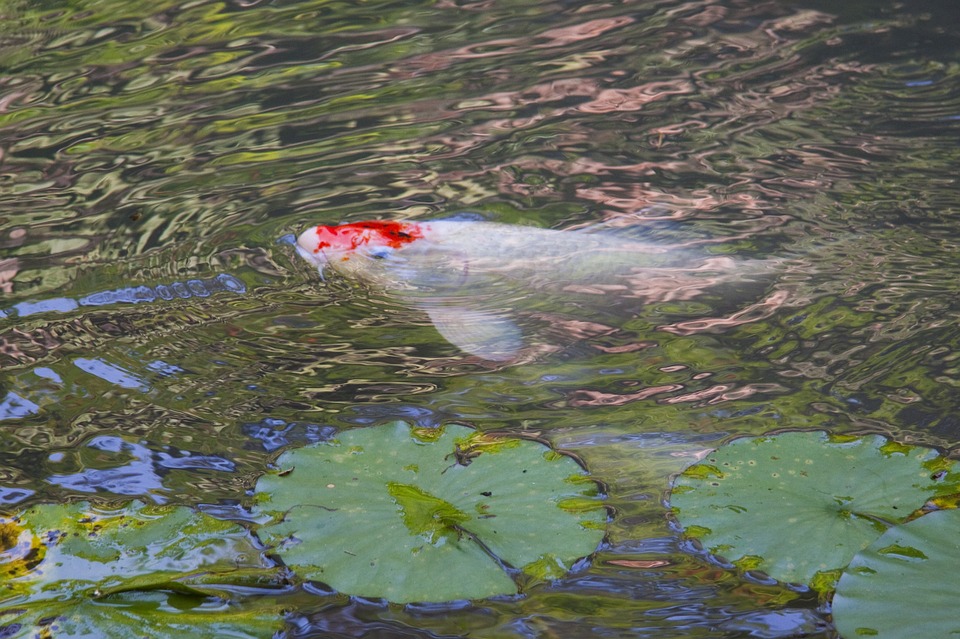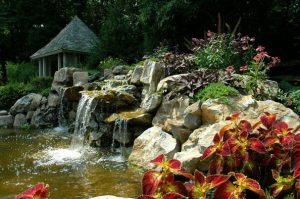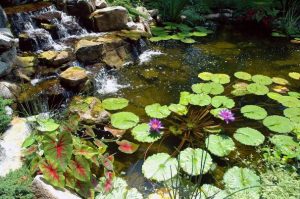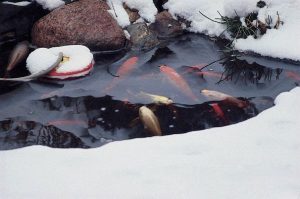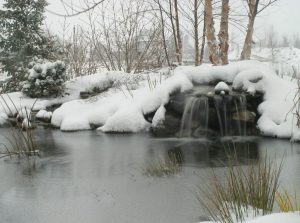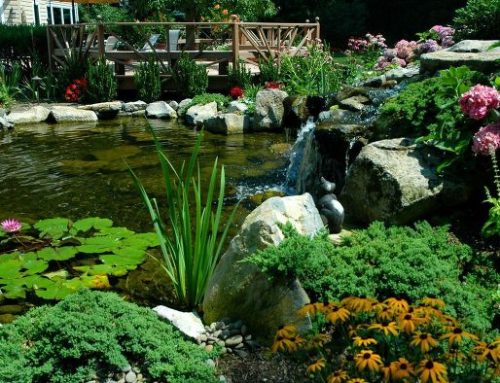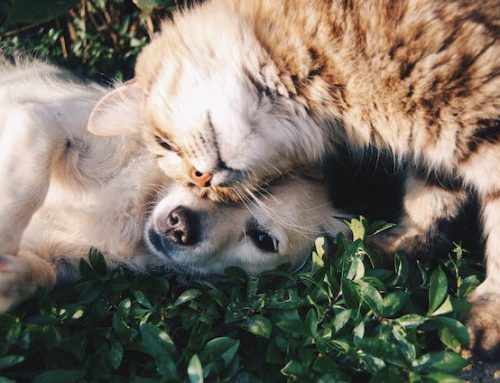With each seasonal change there are things you can do to keep your koi pond heathy and thriving. And fall maintenance is particularly important.
Plants and Fallen Leaves
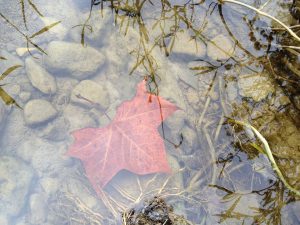 Now is the time — before winter sets in — to look over your pond’s plantings and remove any dying plant material.
Now is the time — before winter sets in — to look over your pond’s plantings and remove any dying plant material.
It’s important to do this before the pond water temperature drops below 50 degrees (F). Above 50 degrees, the fish are still active and are not at risk of being hurt while this is being done.
“Plants can rot out of season and build up poisonous gases that will not be able to escape when ice forms,” says Dave Stockwell, owner of Deck and Patio. “This could cause any koi in the pond to go, from simply hibernating, into a dangerous state of torpor. So prune any dead stems and leaves.”
Dave adds that if you use pond netting before the autumn leaves fall, all you need do after fall foliage season is pull it up and get rid of the collected leaves.
If you didn’t put up netting to collect the leaves, use a fine netting to scoop up the debris.
Also, if you suspect that fallen leaves may have gotten lodged in the pond shelves and edges, you can either drain the pond a little yourself to get at them, or contact a pond designer like Deck and Patio for help completing this task.
If calling a pond expert in to help, this is a good time to ask them to create safety pond cave(s) if you haven’t done that already.
Pond caves provide a safe place where the fish can hide and lie dormant during the winter months.
Hardy water lilies that float on the water’s surface, and have a short blooming period, can withstand the cold winter months nicely.
Lotuses also can withstand the cold because they bloom in summer and go dormant in winter.
Note: Frost kills non-hardy water hyacinths and along with water lettuce, which fights algae, these should be wintered in a warm spot that is well lighted as they will not survive in the pond over winter.
Pond Fish
It is a common myth that you can’t leave your pond fish outside once the cold sets in.
Actually, fish do just fine during winter. That said, Dave does caution to be alert. When ice covers the pond, the fish might not be getting enough oxygen.
This can be remedied as long as you give them:
•two feet of water to swim in,
•oxygenate the water,
•and keep a hole in the ice with a heater, bubbler and an aerator.
The hole allows the naturally-produced gasses to escape from under the ice.
If the above efforts fail to keep it from freezing, Aquascape Inc. designs manager, Gary Gronwick, suggests using a pond de-icer.
“This will keep a little hole in the ice so gases can escape,” he says. “While some recommend boiling water to create an opening in frozen-over ponds, that should be discouraged. It will only ice up again quickly.“
Gronwick also says to avoid chopping or sawing the ice to open a hole. The noise and vibrations will stress out the hibernating fish to a point they could die.
That done, Mother Nature will do the rest. The fish will spend the entire winter hibernating at the bottom of the pond, or in a cave designed for this, and then will slowly wake up as the water warms in the spring.
The fish do not need to eat during this time. In fact, they shouldn’t be fed at all.
Keeping any waterfalls running during cold months helps move the water so ice doesn’t form.
But if ice builds up, pond aerators can put bubbles back in the water to add oxygen for the fish.

